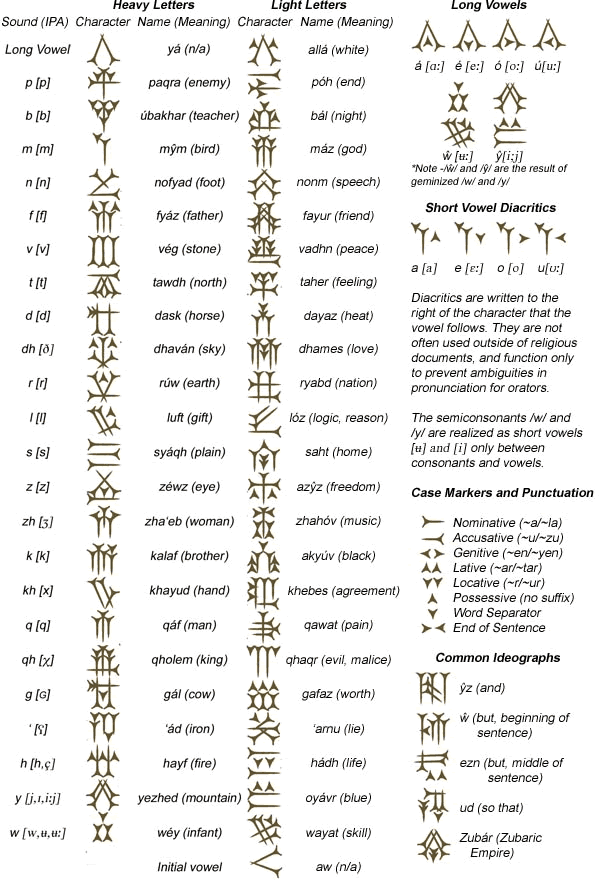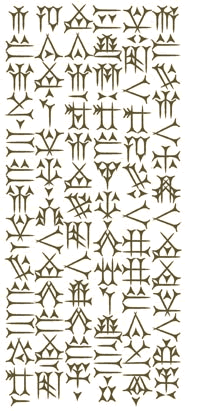Old Zubaric Abjad (Átyódh Azzbyár)

The Zubaric abjad is a cuneiform writing system created by Jason Liekhus,
who started work on it in 2006 for use in his constructed world project.
The mechanics of the writing system were inspired by the Semitic abjads,
and in part by complex writing systems such as Japanese. Its aesthetic
qualities are modeled after ancient cuneiform scripts such as Akkadian
and Sumerian.
Internal history
Zubaric cuneiform is used to write Old Zubaric (Nazbur Adyaz), also known
as Dyzite Zubaric. The Old Zubaric language is a daughter of Proto-Safritic,
a highly inflected language originating in the mountains northwest of the
Valley of Zubár. The language was first established in Zubár when the
discovery of bronze enabled the Safritic tribal lord Úharammáz to conquer
settlements at the mouth of the river Zhwl, where he established the city
of Dyz.
Prior to the Safritic conquest Zubár was populated mostly by Oleptites,
who were credited with creating the first writing system in the world’s
history. Oleptic cuneiform was originally a logographic writing system
used to write their isolating language. It was later adopted by the Dyzites
to represent the phonetic values of their language, thus becoming the first
alphabetic writing system. The language of Dyz spread with the political
influence of the city, and later came to be known as the Zubaric language.
In later times it was maintained as the liturgical and political language
of the empire of Zubár.
Notable features
- Old Zubaric is written in vertical columns from left to right.
- Most Old Zubaric words, with the exception of conjunctions and
postpositions, are based on a triconsonantal root, much in the same
as modern Arabic and Hebrew. These roots are represented in writing
by the “heavy letters”, while all other sounds are represented by
“light letters” and occasionally logographs.
Old Zubaric alphabet

Sample text

Transliteration
Qayfn syufra lyusúda ‘óz-murudh ku azyzu yz zaáfu
gofzaw yz aqhyat hvadh. Doyabdh yahmuvu sawruyen yz ad’elen, ororyánt
kyalaf azfa azzar abta.
Translation
All human beings are born free and equal in dignity and rights. They
are endowed with reason and conscience and should act towards one another
in a spirit of brotherhood.
(Article 1 of the Universal Declaration of Human Rights)
